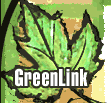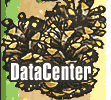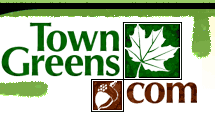Cornwall Village's green is a nearly square lawn on a corner lot bordered on the north by Bolton Hill Road and the east by Pine Street. A narrow lane, almost a path in the grass, runs along the southern boundary of the green next to a picket fence and some trees which form the boundary line with the neighboring residential property. Another white picket fence and St. Peter's Evangelical Lutheran Church (1873) form the western boundary. The church faces the Bolton Hill Road rather than the green.
The buildings presently surrounding the green include the two churches, the town hall and library building (1908), and Rumsey Hall, constructed in 1848 as a boarding school and vacant since 1950. Two early 19th-century residences also border the green. Despite these buildings clustered at the green that create the town center, they do not provide a great sense of enclosure. This is partially due to the expanse of the green - measuring just over one acre, and the distance between the buildings.
The green for the most part remains undeveloped. There are no paths and no curbs separating it from the two-way streets bordering it. New trees have been planted along Pine Street and Bolton Hill Road to replace trees lost to the 1989 tornado. It spared the Charter Oak scion, planted in 1966 which is dedicated to Lewis S. Gannett.
Near the oak tree are two tablet-like masonry monuments, one commemorating veterans of World War One and World War Two, the other honoring veterans of Korea and Vietnam. In the northwest corner is a monument commemorating the site of the First Foreign Mission School which "from 1817 to 1826 trained young men of many races to act as Christian missionaries among their peoples." A flagpole is surrounded by shrubs near the Lutheran Church and another one is located to the north of the Korean War monument.






![]()